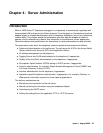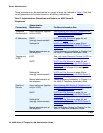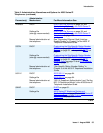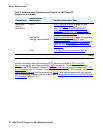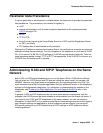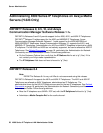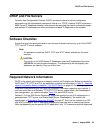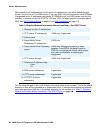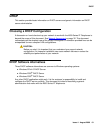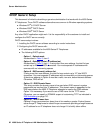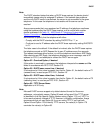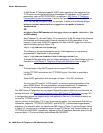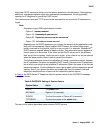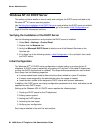
DHCP and File Servers
Issue 4 August 2006 59
DHCP and File Servers
Dynamic Host Configuration Protocol (DHCP) provides a means by which configuration
parameters can be automatically assigned to clients on a TCP/IP network. DHCP minimizes a
4600 Series IP Telephone network’s maintenance by removing the need to individually assign
and maintain IP addresses and other parameters for each IP telephone on the network.
Software Checklist
Ensure that you have purchased and/or own licenses to install and use any or all of the DHCP,
TFTP, and HTTP server software.
Note:
Note: It is possible to install the DHCP, TFTP, and HTTP server software on the same
machine.
!
CAUTION:
CAUTION: The circuitry in the 4600 Series IP Telephones reserves IP addresses of the form
192.168.2.x for internal communications. The telephone(s) will not properly use
addresses you specify if they are of that form.
Required Network Information
DHCP is the control point where an enterprise controls its IP telephones. Before administering
DHCP and TFTP, HTTP, and TLS, as applicable, complete the information in Table 3:
Required
Network Information Before Installation - Per DHCP Server on page 60. Completing the pre-
installation steps ensures that you have the necessary information regarding your network. If
you have more than one Gateway, TFTP/HTTP/TLS server, subnet mask, and Gatekeeper in
your configuration, you need to complete Table 3
for each DHCP server.
Release 1.5 of the 4600 Series Telephones supported specifying a list of IP addresses for a
gateway/router, TFTP server, and Avaya Media Server Gatekeeper(s). We explain this
specification in Overview of Voice over IP (VoIP)
on page 27. Each list can contain up to 255
total ASCII characters, with IP addresses separated by commas with no intervening spaces.
Note that depending on the specific DHCP application, only 127 characters might be supported.





